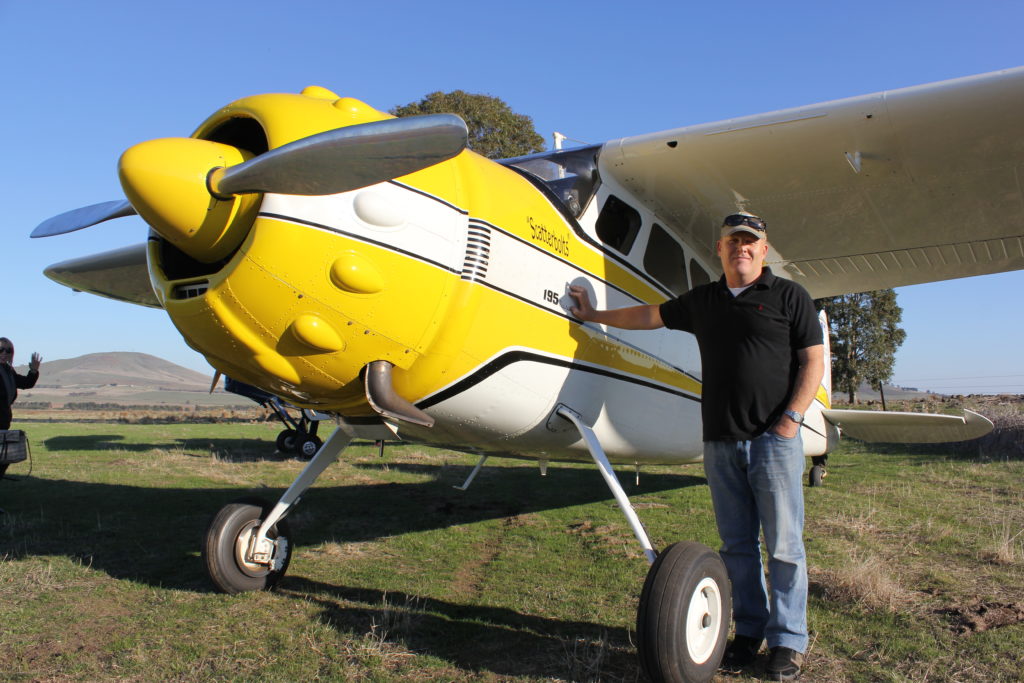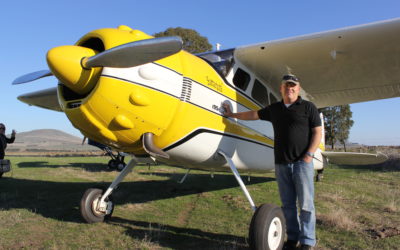How much should you insure your aircraft hull value for? – Mike Dalton shares his thoughts
2023 Edition
About Mike, the author of this article:
Mike Dalton is our Head of Aviation at Agile Underwriting. He is a licensed pilot with a Commercial Pilots Licence, RAAus Pilot Certificate, and an Airline Transport Pilots License in the US. Mike enjoys working with customers and discussing aviation and is eager to simplify aviation insurance for customers, brokers, and insurers.
Mike has nearly 30 years of insurance experience, focusing on aviation underwriting. He has extensive experience writing risks in Australia, New Zealand, Papua New Guinea, and the South Pacific and has written policies in the airline, manufacturing, airport, and general aviation industries.
He has held management positions at one of Australia’s largest Aero Clubs and has his own Air Operators Certificate for passenger transport charter operations. He owns and operates a small vintage aircraft collection and has flown over 50 different general aviation aircraft types.
I published an article discussing aircraft values and “what I should be insuring for” about 5 years ago, and a couple of crucial things have changed since then, so I think it’s time we revisit the topic.
There’s no doubt that the global pandemic has had a far-reaching impact on many facets of the aviation industry. Beyond the apparent disruptions to airline schedules and the flow-on effect of that, severe supply chain issues and freight costs have increased astronomically. While this may improve over time, there’s no sign on the horizon and the skeptic in me expects that situation to remain unchanged for quite some time.
As a great comparison, a close friend of mine and I ordered overhauled engines for our Cessna 195s from the same supplier at about the same time. I was fortunate that mine was completed and shipped pre-covid, and the cost differential between sea and air freight was only about $600. Naturally, I opted for the latter but a mere 12 months or so later that differential had escalated to approx—$3000 for the other engine.
The current exchange rate between the AUD and USD is a serious challenge. For example, I purchased my C195 in 2010 at an exchange rate of 0.88. A year later, I imported a C120 at an exchange rate of 1.06; when I wrote my article in 2016, it was 0.73. At the moment, we are looking at 0.66. So, ignoring all the other import costs, an aircraft purchased in 2010 for $100k (USD) at 0.88 = $114k (AUD). In 2016, that became $136k (AUD); now, in 2022 is $152K (AUD). So that’s a 33% increase over the past 12 years just due to exchange rate fluctuations.
Irrespective of the above, we’ve seen locally increasing prices due to supply, demand, and other factors. A couple of years back you could pick up a C172 (M or N model) for sub $50k, but now it’s around the $100k mark. C182s and PA28s have increased more aggressively too. Several factors drive this that I won’t go into it here, but it’s safe to assume that the C172 or PA28 you picked up for $50k a few years back could not be replaced in the current local market if it was subject to damage that makes it a total loss.
The increasing values aren’t just an Australian issue; we see the same in New Zealand for the same reasons. The US focussed “Flying” magazine released an article in September 2022 indicating an average increase of GA piston engine aircraft of 34.5% between 2019 and 2022 in the US marketplace.
So now to a comparison of the costs I published back in 2016. As shown in the table below, an aircraft purchased for $45,000 (USD) in 2016 would cost you $85,137(AUD) once it landed in Australia. Note that this is before local reassembly and certification costs and rectification of any squawks discovered once she arrives. Today that’s $129,643 (AUD), which is a significant 50% increase over the past 12 years. Note that I’ve applied the 34.5% US market increase suggested by Flying magazine to the base purchase price.
| 2016 | 2022 | |
| Purchase Price | USD 45,000 | USD 60,300 |
| Disassembly/Packing | 3,000 | 3,800 |
| Export CofA | 1,000 | 1,300 |
| Sea Freight | 7,200 | 11,786 |
| Transit Insurance | 300 | 600 |
| GST | 5,650 | 7,779 |
| Total | USD 62,150 | USD 85,565 |
| Exchange rate | 0.73 | 0.66 |
| AUD TOTAL | AUD 85,137 | AUD 129,643 |
Returning to the point of this article – “What should I insure my aircraft hull value for”? Well, the principle stays the same- Owners need to consider several factors in determining the correct hull value for insurance purposes such as:
- What is my aircraft’s current condition in terms of engine and prop time to run, paint, and interior and, especially these days, avionics fit out?
- If the aircraft is a total loss following an accident, what will it cost me to replace it with a like-for-like machine?
- What does it owe me in terms of capital improvement costs (not maintenance)? and
- What’s the cost to repair it in the event of a repairable accident?
That last point is an important one, repairs for minor damage have increased astronomically over the past 20 years and can escalate to a point where a perfectly repairable aircraft becomes an insurance write-off. Take a prop strike while taxing in a fixed pitch, fixed gear machine like a PA28. Back in the “good old days”, a runout check on the crank and a repaired or replaced prop would cost the Insurer around $3,000. Fast forward to now, and that same incident will cost insurers at least $30k. There’s approximately $15k in the required bulk strip, a $9k propellor, and $5k in removal and refit. So, your PA28-140 insured for $35,000 becomes an insurance write-off.
It’s essential to understand at this point that if you need to make a claim on your aircraft insurance policy, it’s your insurer’s decision if the aircraft is repaired or written off and if your insurer elects to write it off and pay you the sum insured, then the salvage becomes their property. They have the right to sell that to recover whatever funds they can. This adds extra importance to ensure you have adequate insurance, as an underinsured aircraft is more likely to be written off.
Note that a hefty maintenance bill doesn’t necessarily mean the value increases unless it’s related to upgrades. Servicing and rectification works are part of the cost of ownership and generally don’t increase the value of your aircraft. Engine and prop overhauls, avionics upgrades, and the like certainly do but not necessarily to the same extent as the project’s cost.
Aviation hull insurance policies are generally an agreed value cover and do not include averaging clauses as some general insurance policies do. So, it’s essential to review your hull sum insured regularly and ensure it’s about right, given the current state of the aircraft market. Look in the trader or online (locally and in the US) for the same type with similar specifications to find a benchmark. You can review your hull value at any time, and you will find that, for the most part, insurers will agree to accommodate value changes part-way through your policy period and not just at renewal.

